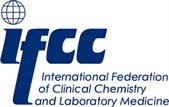Volatolomics (WG-Vol)
The Working Gloup is closed since December 2021
below links are on-going available resources
Membership
| Name | Position | Country | Term | Time in Office |
| L. Kricka | Chair | US | 1st | 2019 06 - 2021 12 |
| P. Fortina | Member | US | ||
| J. Wiencek | Member | US |
The IFCC Emerging Technology Division (ETD) is dedicated to providing current awareness for emerging technologies likely to have important clinical diagnostic applications in the near future. One of those technologies is volatolomics (breathomics) i.e., breath analysis.
Terms of Reference
- To develop a survey of the diagnostic applications of volatolomics (breath analysis).
- To develop periodic updates of the volatolomics survey over the next 3 years.
Current projects
- Applications of breath analysis in detecting COVID-19
- Survey of the diagnostic applications of volatolomics (breath analysis) including recent literature, companies, clinical diagnostic products, and clinical trials.
- Solicit industry and academia input to the planned updates of the volatolomics survey.
|
As part of our current awareness initiative, the WG on Volatolomics has surveyed the recent breath analysis literature (up to August 2020) that is focused on COVID-19 testing. The survey can be found at COVID-19 Survey. We have also surveyed (up to January 2021) breath analysis devices for COVID-19 testing. NEW!A recent development, covered extensively in the media, has been training of dogs to sniff out COVID-19 infections in real-time. A brief survey of this literature can be found clicking here. |
This Volatolomics Survey and the first update to the volatolomics survey can be found at: Volatolomics Survey 2019, and at: Volatolomics Survey 2020, and a further updatefor 2021 at: Volatolomics Survey 2021.
This web page will provide a regularly updated perspective on the emerging clinical diagnostic applications of volatolomics over the next 3 years.
Breath analysis is not new and already has a few, but very specific applications (e.g., breath alcohol testing, hydrogen, carbon monoxide, oxygen, carbon dioxide, nitric oxide, and nitrous oxide testing, 13carbon/12carbon-based tests)(https://www.ncbi.nlm.nih.gov/pmc/articles/PMC2990505/).
The types of breath analysis can be subdivided into:
- Analysis of exogenous compounds, e.g., ethanol, nitrous oxide (anesthesia), 13carbon compounds.
- Analysis of specific endogenous compounds, e.g., oxygen, carbon dioxide, nitric oxide.
NEW!A recent development has been the commercialization of wearable and handheld devices that measure carbon dioxide or acetone in breath in order to monitor metabolism and determine if your body is using fats or carbohydrates for fuel. A brief survey of these developments can be found clicking here. |
3. Analysis of mixtures of unidentified endogenous compounds (e.g., Volatile Organic Compounds or VOCs) to provide a diagnostic signature.
4. Analysis of exhaled particles.
Current work on volatolomics centers on finding diagnostic utility in the pattern of compounds (VOCs) in breath. Breath analysis is an attractive proposition because this type of testing is non-invasive, applicable to the point-of-care and offers the possibility of real-time clinical management.
Already, there are more than 10 companies focused on the clinical diagnostic applications of volatolomics employing diverse analytical technologies (breath analysis analyzers are sometimes known as “electronic noses”). The broad range of diagnostic applications under investigation and development ranges from breath glucose testing to testing for different types of cancer.
Breath analysis technologies are diverse and include different types of mass spectrometry [e.g., gas isotope ratio mass spectrometry (GIRMS), selected ion flow tube mass spectrometry (SIFT-MS), field asymmetric ion-mobility spectrometry (FAIMS), secondary electro-spray ionization-MS], sensors and sensor arrays (e.g., copper bromide-based sensor, colorimetric high dimensional sensor array), gas chromatography (e.g., GC SAW). Further notable aspects of breath analysis technologies are the use of artificial intelligence, cloud-based analysis of data and analyzers that link to a
smartphone.
The scope and content of this web page will include:
1. News items and opinion pieces from key researchers/opinion leaders about recent developments in the clinical diagnostic applications of volatolomics.
2. A directory of companies active in the clinical diagnostic applications of volatolomics.
3. Links to clinical trials involving volatolomic testing.
4. Details of analyzers and regulatory approvals of clinical diagnostic products based on volatolomic testing.
5. A literature survey updated quarterly designed to provide an educational resource and a snapshot of work since 2010.
Breath alcohol testing, and associated hand-held alcohol meters (breathalyzers), is now a mature sector of breath analysis, as is breath testing for oxygen, CO2, and nitrous oxide, and these will not be considered here in any detail.
The web page has been developed in conjunction with key researchers and companies active in clinical applications of breath analysis. A particular feature of this webpage will be regular updates based on feedback from our readers.
Please send updates and comments to:
Working Group Chair
Dr Larry KRICKA
Department of Pathology & Lab. Medicine
University of Pennsylvania Medical Center
3400 Spruce Street
Philadelphia, PA 19104 - USA
Email: kricka@pennmedicine.upenn.edu
